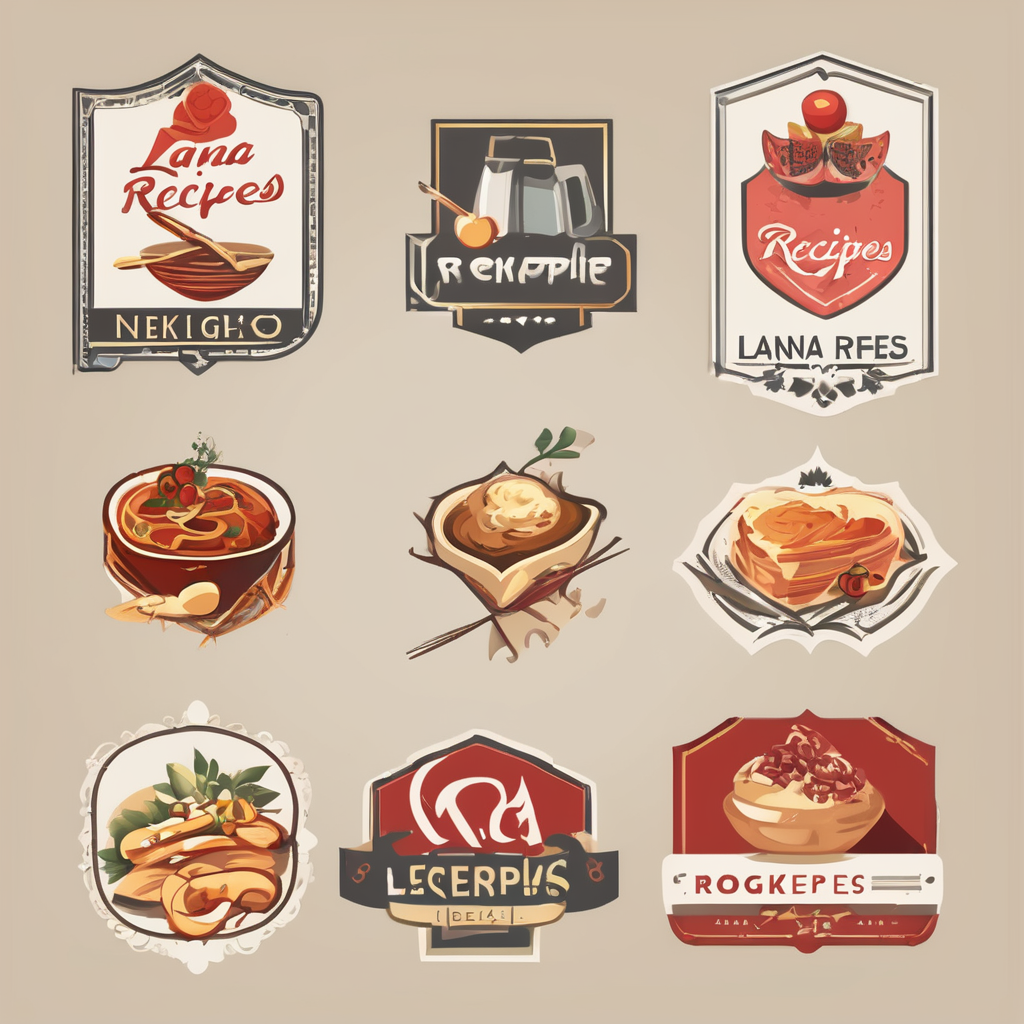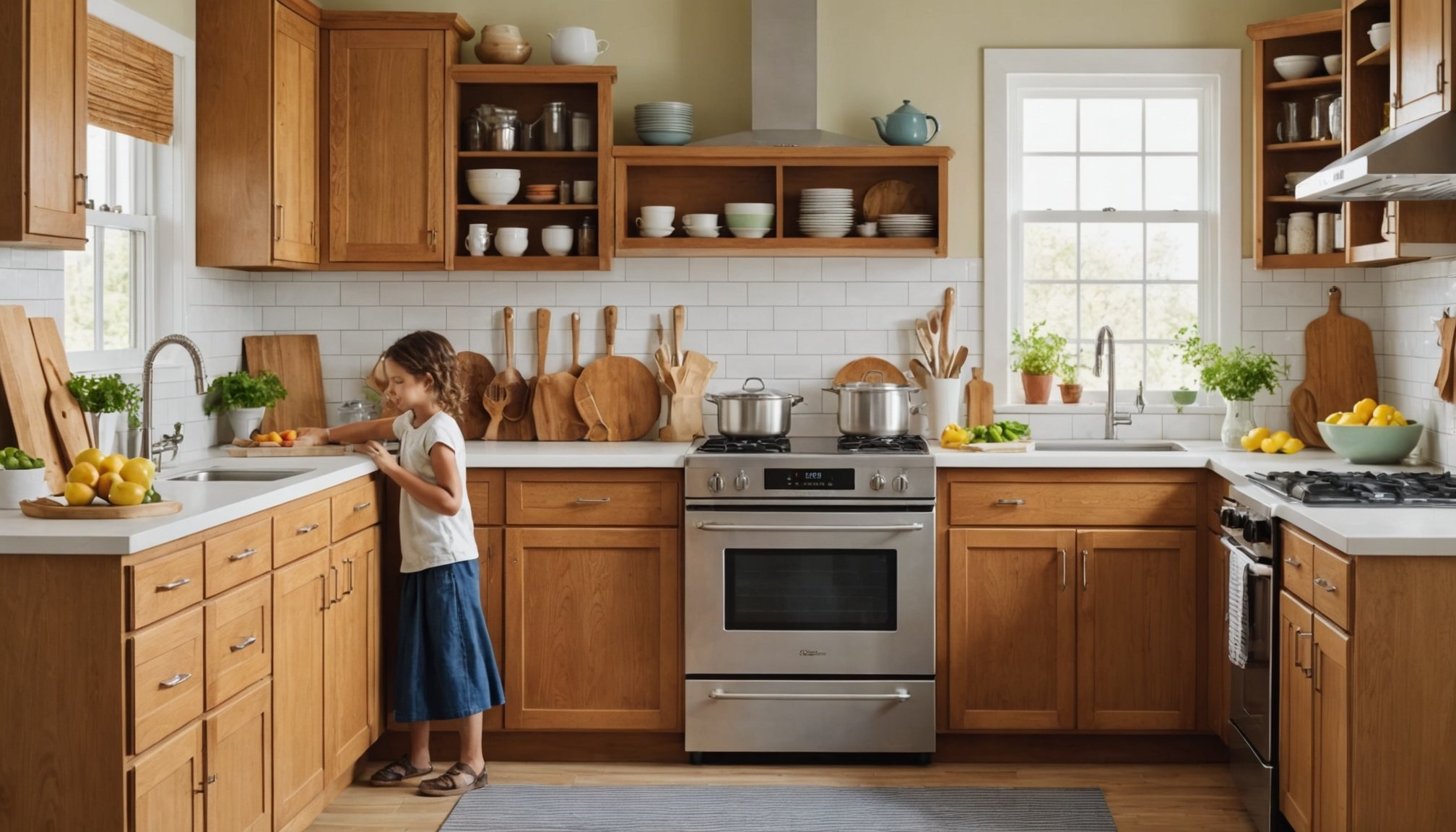Understanding the Zero-Waste Concept
Zero-waste living is a philosophy that aims to minimize the amount of waste going to landfills by promoting sustainable practices in daily life. At its core, it encourages the redesign of resource life cycles to ensure that all products can be reused or repurposed without leaving an environmental footprint. This concept places a strong emphasis on reducing, reusing, and recycling as a way to shift towards more sustainable lifestyles.
In family settings, reducing waste becomes even more significant as the environmental impact multiplies with the number of household members. Families generate significant amounts of waste, particularly in kitchen environments where packaging and food scraps are prevalent. Embracing zero-waste principles in the kitchen can substantially decrease this impact and instill long-lasting habits in children.
Also to read : Maximize your kitchen”s potential: discover the advantages of a retractable stovetop for enhanced counter space!
Kitchen waste has wide-ranging environmental consequences. Organic waste in landfills produces methane, a potent greenhouse gas, while excessive packaging contributes to plastic pollution. By adopting zero-waste practices, families can make concerted efforts to combat these issues. Simple acts, like choosing bulk buying over packaged goods or composting food scraps, can start a journey towards meaningful environmental stewardship.
Assessing Your Current Kitchen Environment
Before embarking on a zero-waste journey, conducting a thorough kitchen assessment is essential. Start by identifying key areas where waste is commonly generated. Packaging, food scraps, and disposable items often contribute significantly. Understanding these patterns helps tailor a more efficient waste management strategy.
In the same genre : Enhance Your Open-Plan Living: Effective Kitchen Acoustic Improvement Strategies
Evaluate your current storage and cooking habits. Are you frequently using single-use plastics? Is there room for improving storage to maximize food longevity? Recognizing these habits provides insight into your kitchen’s environmental footprint.
Common kitchen items, such as plastic wraps, paper towels, and non-recyclable containers, have substantial impacts on the environment. Their production and disposal contribute to pollution and resource depletion. By replacing them with reusable alternatives, you directly reduce your carbon footprint.
Assessing your kitchen environment is the first actionable step in transitioning to a more sustainable lifestyle. Through conscious changes in storage, cooking, and purchasing, families can decrease waste production. Here are some steps to consider:
- Track waste patterns over a week to identify hotspots.
- Audit your existing kitchen tools and products for eco-friendliness.
- Explore sustainable swaps for identified waste-generating items.
This assessment guides you towards creating a sustainable kitchen that aligns with zero-waste principles.
Setting Sustainable Goals for Your Kitchen Makeover
Transforming your kitchen into an eco-friendly space begins with clearly defining sustainable goals. This essential step not only provides direction but also measures progress. Establishing measurable objectives for waste reduction inspires both motivation and accountability. For example, aim to reduce waste output by 50% within a year or switch to using only reusable options within six months.
Involving the entire family in the goal-setting process fosters a sense of collective responsibility. This inclusion ensures every household member understands and supports waste-reducing initiatives. Encourage open discussions to allow everyone to contribute ideas and share their vision of a more sustainable home.
Prioritize areas for improvement by referring back to your kitchen assessment. Focus on the waste-generating activities you identified, like excessive packaging or unhealthy storage habits, and decide on changes that can deliver the greatest impact. Perhaps switching to bulk buying or installing energy-efficient appliances can serve as starting points.
By setting focused, achievable goals, your household can take concrete steps towards a more eco-friendly kitchen, aligning your home’s activities with broader zero-waste living principles.
Practical Steps to Create an Eco-Friendly Kitchen
Transforming your kitchen to be more environmentally responsible involves adopting eco-friendly practices and selecting sustainable products. Start by focusing on the materials you use. Opt for eco-friendly surfaces like bamboo or recycled glass, which have a lower environmental impact. Incorporate biodegradable and compostable items where possible, reducing reliance on disposables that end up in landfills.
Plastic kitchenware alternatives can significantly reduce your plastic footprint. Choose stainless steel, glass, or silicone products instead. These materials are not only durable but also free from harmful chemicals, making them a healthier choice for your family.
Implementing energy-saving solutions is another critical step. Equip your kitchen with high-rated energy-efficient appliances. These appliances minimize electricity usage and often come with added features that enhance convenience. Explore renewable energy options to power your kitchen, such as solar panels, if viable.
Water conservation cannot be overlooked. Installing water-saving faucets and appliances like dishwashers with eco-modes can drastically cut water usage. Cultivating habits like steaming rather than boiling food helps save water. These practical measures contribute collectively to achieving a truly eco-friendly kitchen.
Meal Planning for Zero-Waste Living
Meal planning plays a crucial role in achieving waste-free cooking. By thoughtfully organizing your meals, you can significantly minimize food waste. Start by crafting meal plans that align with local and seasonal produce, which often come with less packaging. This approach supports bulk buying, reducing single-use packaging and emphasizing sustainability.
When planning meals, incorporate versatile ingredients that can be repurposed throughout the week. For instance, a roasted chicken can serve as a centerpiece one night and its leftovers can be transformed into a salad or soup the next day. This reduces spoilage while adding variety to your meals.
Local sourcing is another exceptional way of fostering zero-waste principles. By choosing local markets or farms, you not only cut down on transportation emissions but also support small-scale growers.
Consider creative ways to utilize leftovers or parts of food typically discarded. Freezing excess allows you to save perfectly good produce before it spoils, and making broth from vegetable scraps maximizes usage. With these strategies, meal planning becomes a powerful tool in your zero-waste journey.
DIY Projects for a Sustainable Kitchen
Engage creatively with your kitchen by undertaking DIY sustainable projects. Not only do these projects serve as practical steps towards sustainability, but they also infuse a personal touch in your zero-waste living journey.
Upcycling Old Kitchen Items
Transform old kitchen items into something new and functional. For instance, use empty jars as storage for bulk goods or repurpose wine bottles into vases. Upcycling reduces waste and cuts the demand for new products, thus saving money and resources.
Making Your Own Cleaning Products
Another impactful project is crafting your own cleaning products. Combine common ingredients like vinegar, baking soda, and essential oils to formulate effective, non-toxic cleansers. These homemade solutions are not only economical but also environmentally friendly by minimizing hazardous chemicals.
Creating a Zero-Waste Kitchen Garden
Consider building a zero-waste kitchen garden. Use food scraps like potato peels or herb stems to regrow plants. This encourages sustainable kitchen practices by diverting waste while producing fresh ingredients right at your fingertips.
By embracing DIY projects, you not only reduce kitchen waste but also contribute actively to sustainability. The process fosters creativity and resourcefulness, making your kitchen both practical and environmentally conscious.
Organizing Your Kitchen for Efficiency and Waste Reduction
Ensuring an efficient and waste-free kitchen relies on understanding optimal kitchen organization techniques. Proper organization not only maximizes space but also supports your zero-waste living efforts. Implementing strategic storage solutions and maintaining a clutter-free environment facilitates the reduction of environmental footprints in daily kitchen activities.
Storage Solutions for Sustainable Products
Begin by utilizing jars and containers for bulk storage, significantly reducing plastic waste. Opt for clear, labeled glass jars to easily identify products, assisting in organizing eco-friendly kitchens. This helps in managing food storage and leftovers effectively, ensuring that only what you need is purchased and used, minimizing food spoilage and waste.
Establishing a Kitchen Recycling and Composting System
Setting up an organized recycling station is crucial. It simplifies waste separation for all family members, fostering effective waste minimization. Additionally, initiate a composting system that transforms organic waste into valuable compost, reducing landfill contributions. Home composting is both beneficial for the environment and acts as a learning tool for sustainable practices.
Maintaining a Clutter-Free and Functional Space
Keep your kitchen clutter-free by conducting regular assessments for waste generation hotspots. Engage family members in maintaining organization by establishing household accountability. Encouraging shared responsibility not only boosts sustainability but also supports a harmonious and efficient kitchen environment.
Resources for Continued Learning and Improvement
Embracing sustainable resources can greatly enhance your zero-waste journey. Enhancing your knowledge with recommended books and blogs on eco-friendly living introduces new ideas and inspires sustainable habits. Accessible works like Bea Johnson’s “Zero Waste Home” offer practical insights and strategies for embracing a waste-free lifestyle.
Leveraging community resources and local initiatives can also provide valuable support. Many communities offer free workshops, swap meets, or eco fairs dedicated to sustainability. These initiatives not only foster learning but also build connections with like-minded individuals who share similar environmental goals.
Online platforms offer additional opportunities for growth. Engage with online courses and workshops to deepen your understanding of zero-waste principles. Sites like Coursera and Udemy provide courses focused on sustainable living, encouraging both individual and family learning.
Involving your family in these educational experiences can foster a unified commitment to sustainability. Shared learning aids long-term commitment and creates collective environmental responsibility. Keep motivated by celebrating small milestones and continually seeking out new information. This dynamic approach keeps your household informed, inspired, and committed to achieving a truly sustainable lifestyle.











